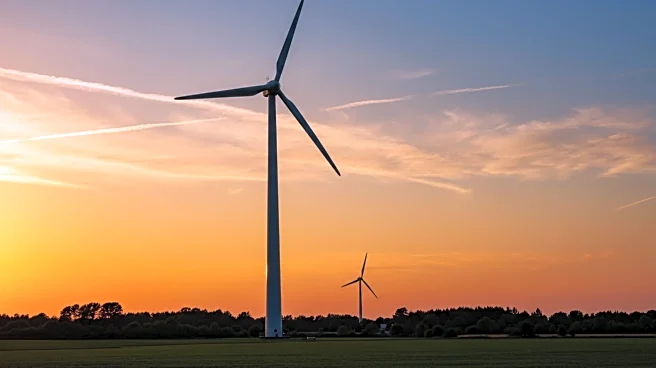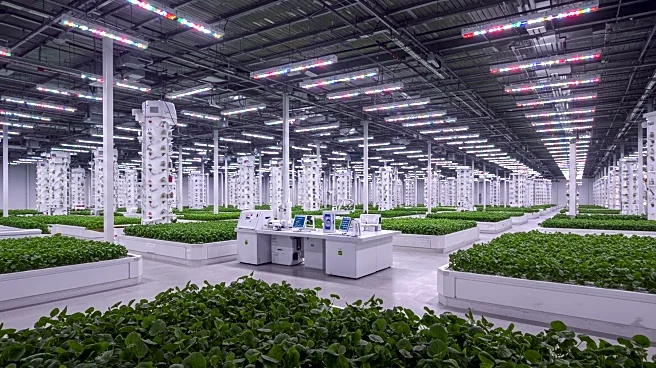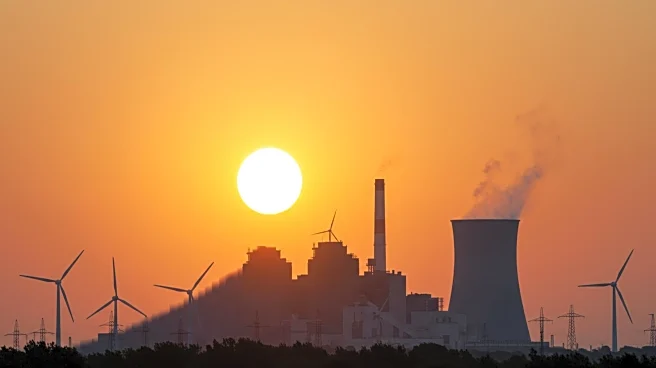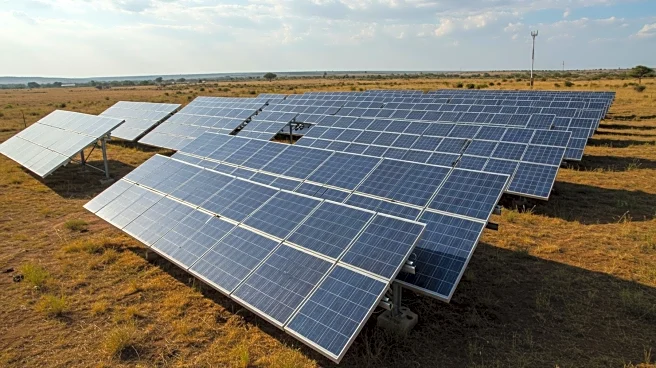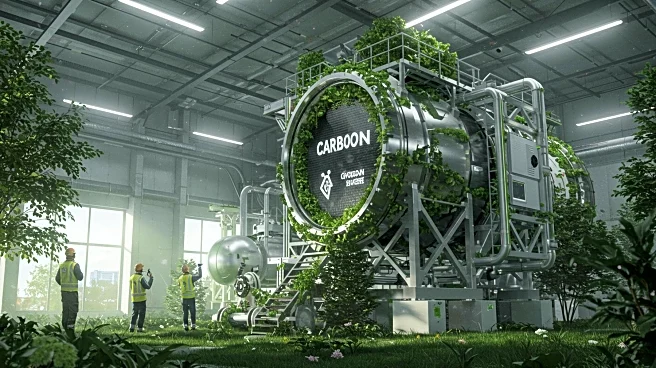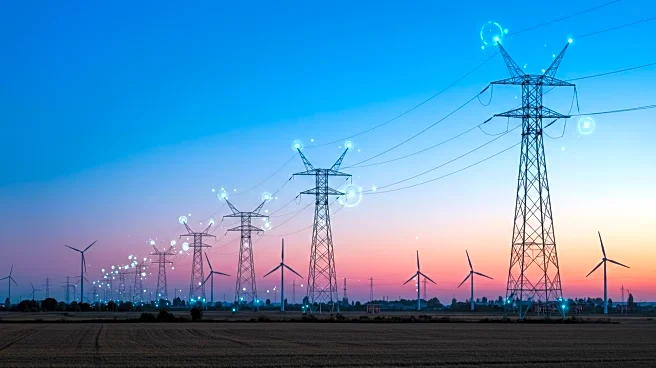What is the story about?
What's Happening?
TotalEnergies is advancing its renewable energy initiatives in Vietnam, focusing on projects that integrate solar and agri-PV systems. These efforts are part of a broader strategy to decarbonize local industries and expand renewable infrastructure. Notable projects include a 28 MWp solar array at Samsung's HCMC CE Complex, which powers 26% of the facility and reduces emissions by 26,000 tons annually. Additionally, a 2.1 MWp agri-PV system with Hiep Phat in Tây Ninh combines agriculture with clean energy. TotalEnergies aims to expand its distributed solar capacity in Asia to 2 GW by 2030, leveraging long-term power purchase agreements to avoid upfront costs for clients.
Why It's Important?
TotalEnergies' initiatives in Vietnam are significant for the global energy transition, offering a model for integrating renewables into industrial operations. The projects align with Vietnam's National Power Development Plan, which seeks to increase renewables to 30% of the energy mix by 2030. This positions TotalEnergies to benefit from policy-driven demand and enhances its credibility as an energy transition stock. The company's financial resilience, with $7 billion in cash flow from operations in Q1 2025, supports its renewable ambitions. By strategically allocating capital to low-carbon projects, TotalEnergies is not only meeting ESG goals but also ensuring financial returns.
What's Next?
TotalEnergies plans to continue expanding its renewable capacity, targeting 35 GW by 2025 and 100 TWh of net electricity production by 2030. The company's collaboration with local partners mitigates regulatory risks and builds community trust, crucial for success in emerging markets. As Vietnam's electricity demand grows, TotalEnergies' solutions, including battery storage, will be vital for grid stability. Investors are advised to monitor TotalEnergies' progress in achieving its renewable targets and maintaining ESG-aligned returns amid global energy market fluctuations.
Beyond the Headlines
TotalEnergies' approach in Vietnam serves as a blueprint for traditional energy companies transitioning to multi-energy leaders. By integrating renewables and aligning with national policies, the company is creating a scalable model for the energy transition. This strategy not only addresses environmental concerns but also offers financial stability, reducing reliance on volatile oil prices. As the world moves towards decarbonization, companies like TotalEnergies that bridge the gap between legacy infrastructure and clean energy are poised to lead future growth.
AI Generated Content
Do you find this article useful?
